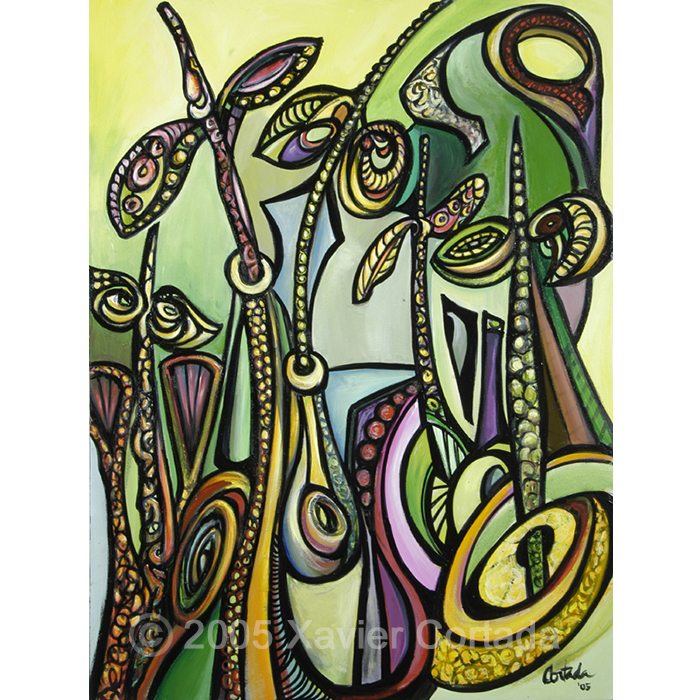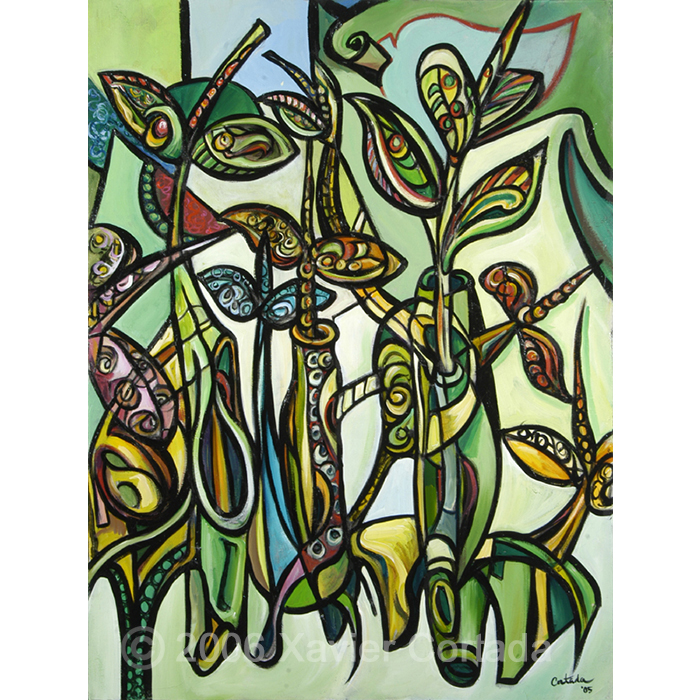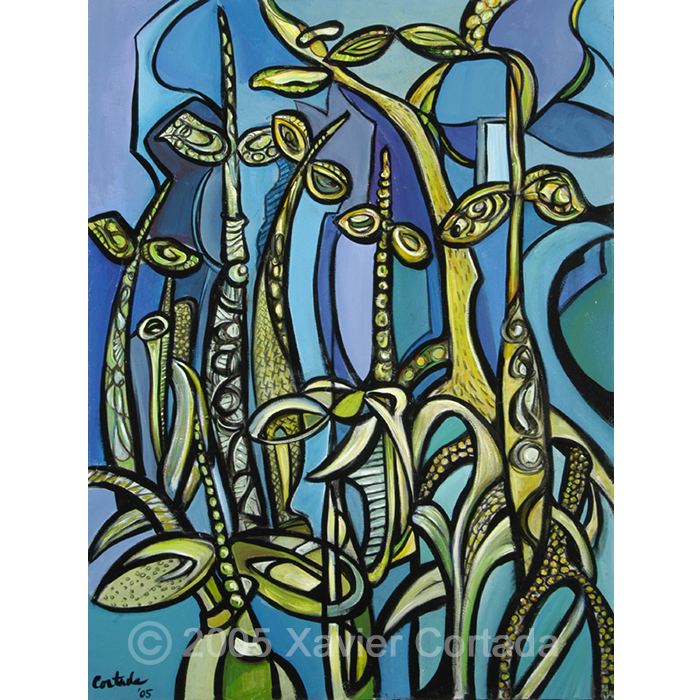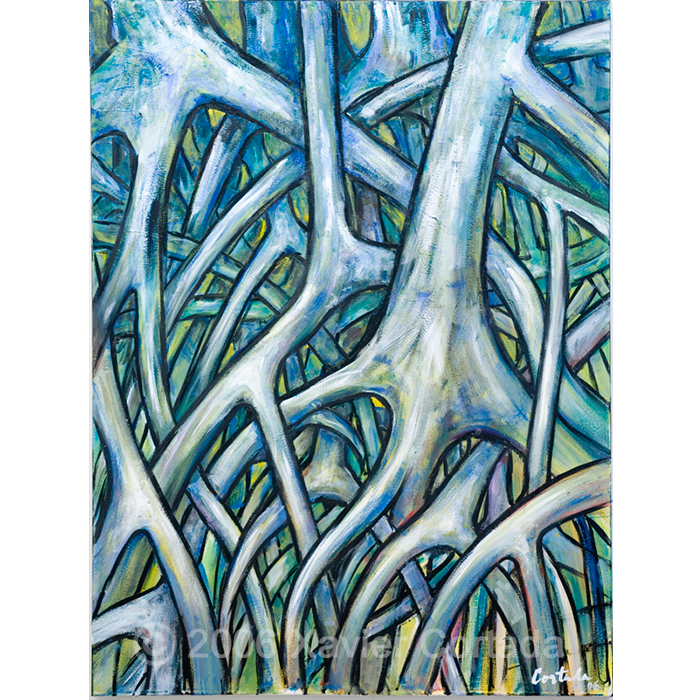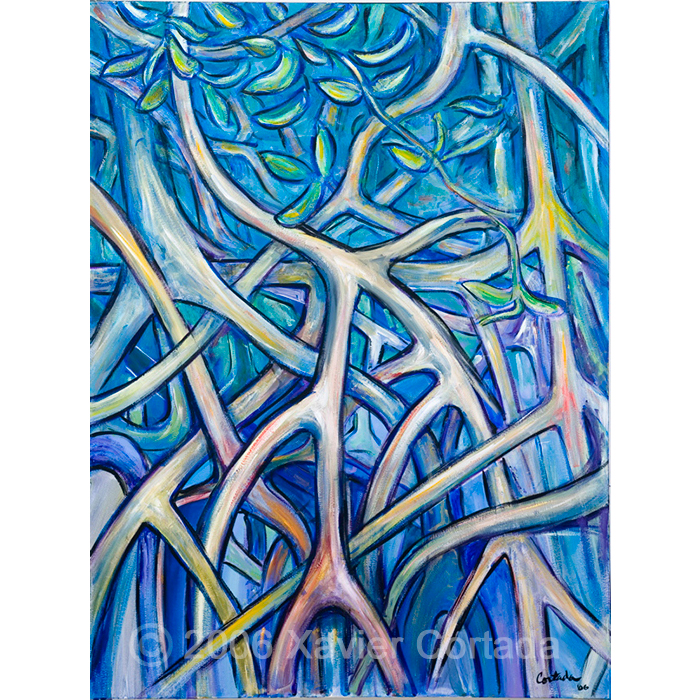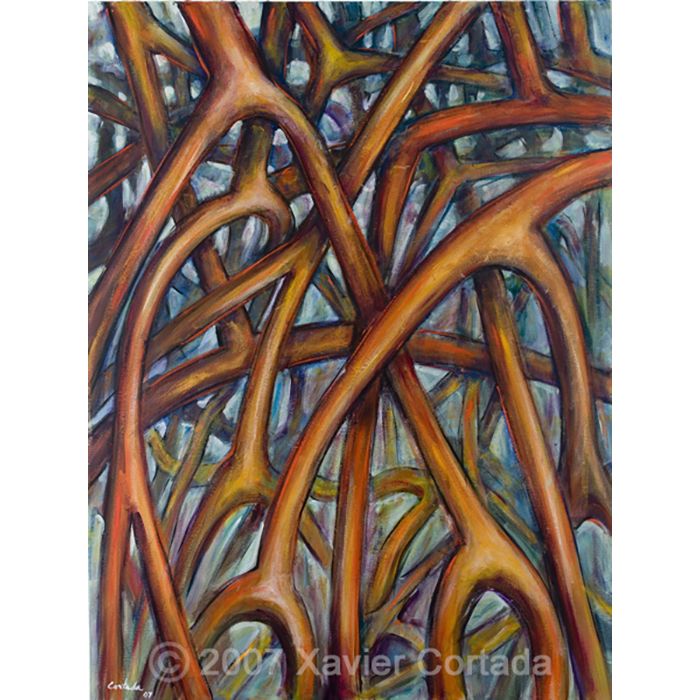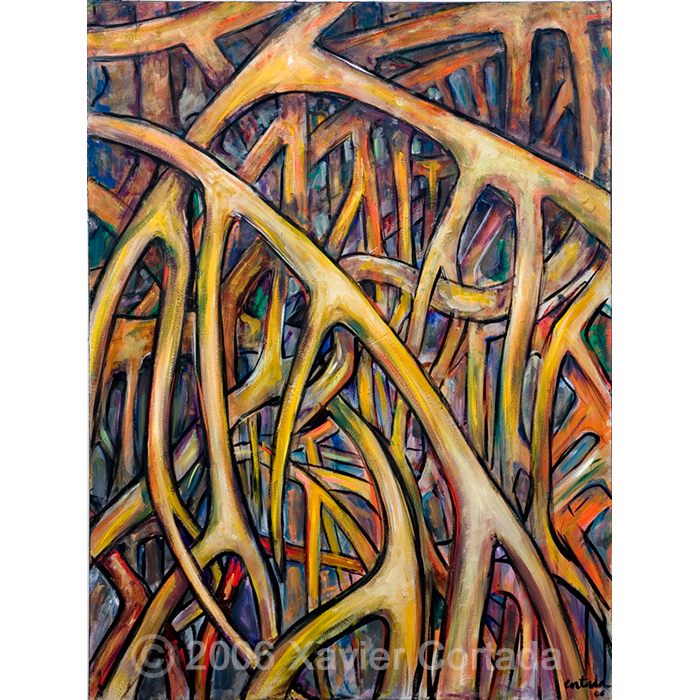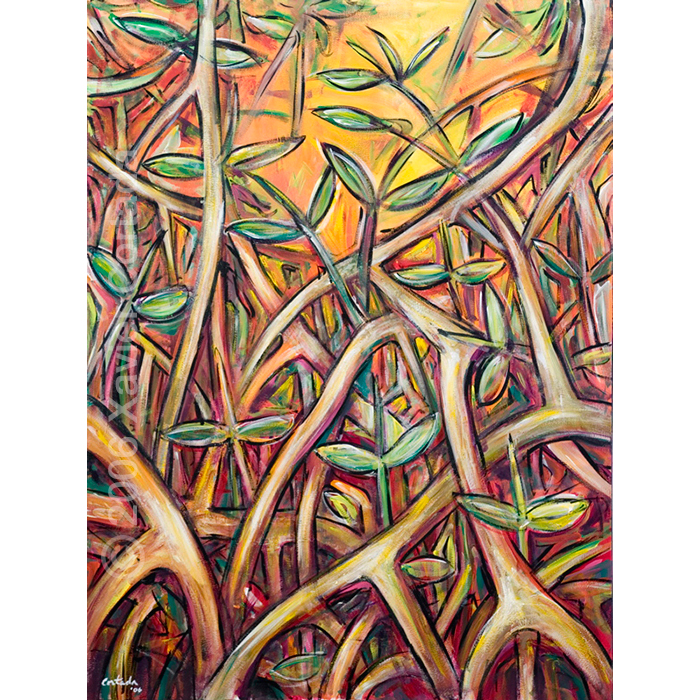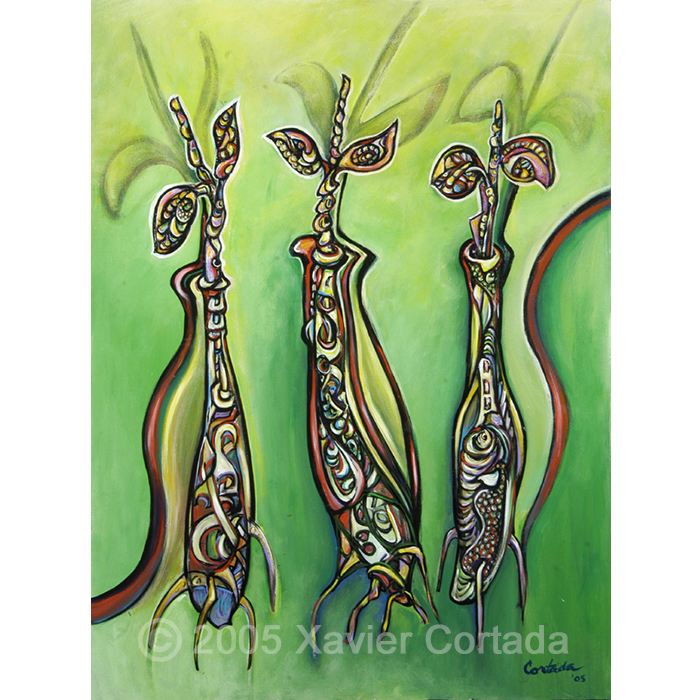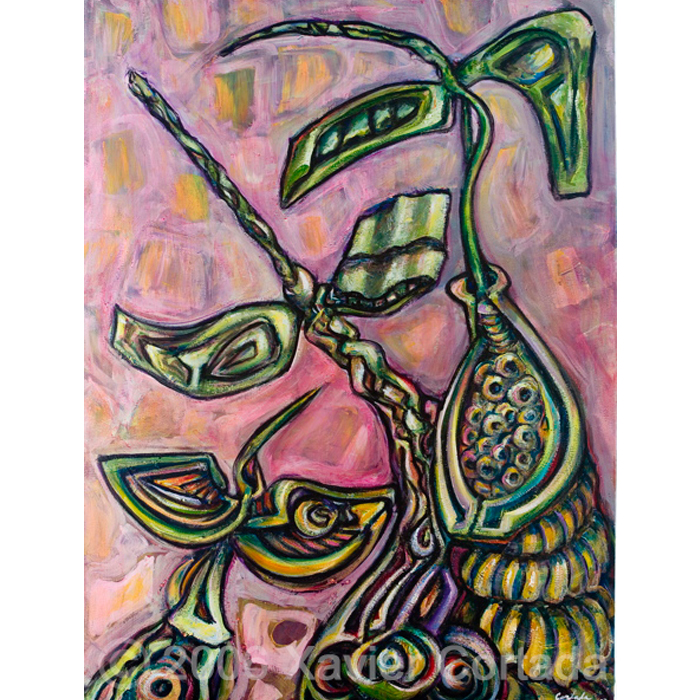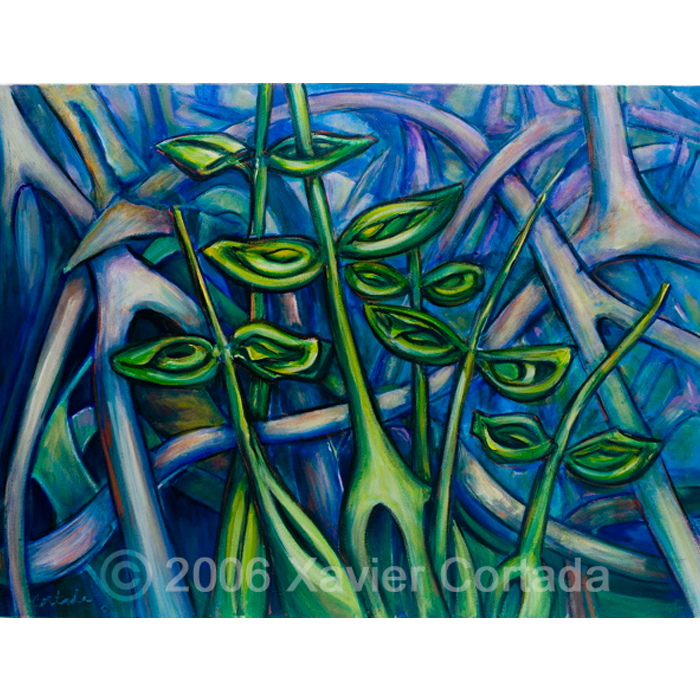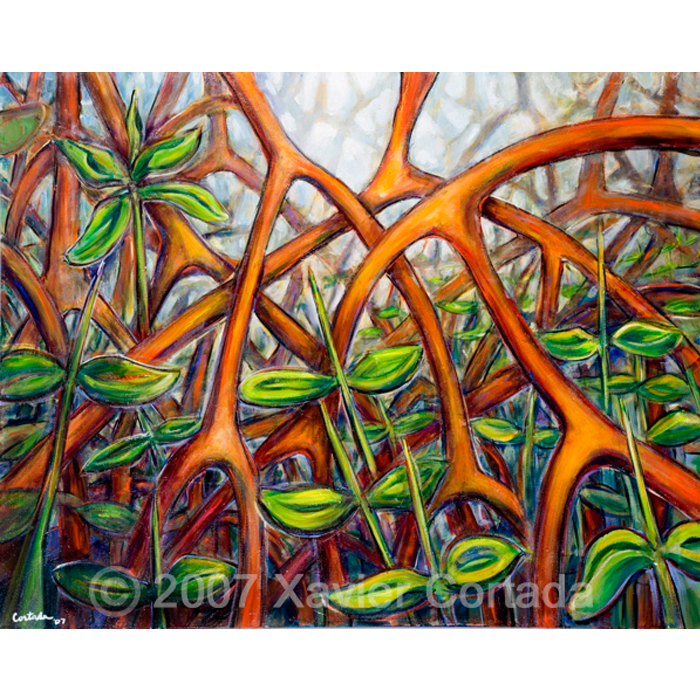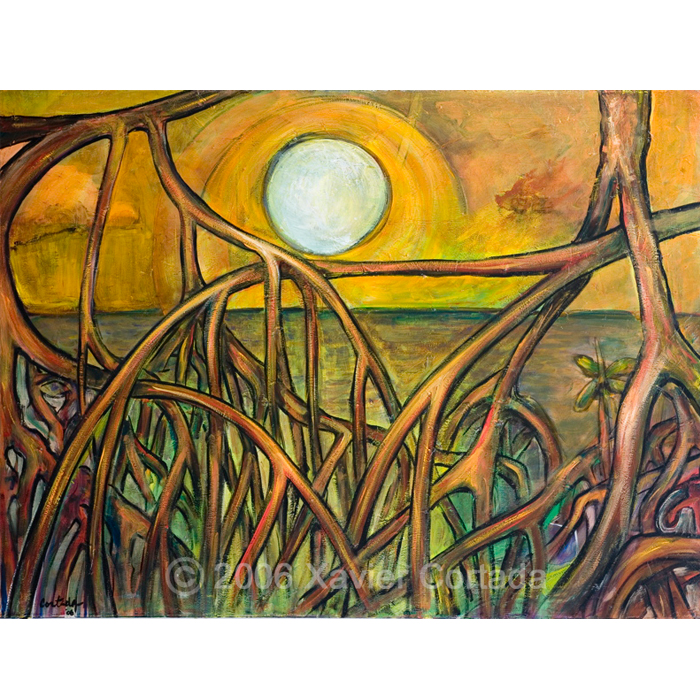Reclamation Project Mangrove Paintings

As a precursor to the artist’s seminal “Reclamation Project”, Xavier Cortada’s series of mangrove paintings strive to acknowledge the existence of an ubiquitous, yet ignored, South Florida icon. Completed over the course of the artist’s career, these works retain the sensibilities of traditional art aesthetics while embodying the conceptual iconography of the artist’s later social practice.
Mangroves were chosen for their native heritage to the South Florida area. Mangrove forests were the dominant landscape of the state from the time of the first European settlers, subject matter previously portrayed in Cortada’s “Florida Mangrove” painting from 2003. Fully grown, mangroves serve a multitude of purposes, from providing habitats to a variety of marine and avian life, to protecting coastal areas from storm surges. The communal focus of these works is further emphasized through the utility of their imagery, the mangrove being a plant that literally protects and shelters communities of a variety of species, beyond just being conceptually significant.
However, Cortada’s mangrove paintings function as more than just a metaphoric reforestation of the local area, but as a prompt for literal reforestation. This is accomplished through its resonance with Cortada’s “Plan(T)” and “Reclamation Project” works, ambitious efforts to plan for the future through the act of planting mangroves throughout Miami.
Seeing in Tune with Nature
Original essay from Cortada’s 2005 Mangroves solo exhibition
The Everglades is one of the most polluted and abused wetlands in America. Its soil has been dug up for limestone (to use in construction), flooded by the sugar industry’s chemical by-products and guttered with sewer water. Poachers prey on alligators, turtles, rare birds and manatees. Lately, its green expanse has been trimmed down by South Florida’s multimillion-dollar real estate industry.
Mangrove swamps, which extend as far north as Tampa on the Gulf Coast, and to Daytona Beach on the Atlantic seaboard, are a crucial Everglades’ habitat. In this vegetation mass, fresh water meets salty water from the tidal flats; an impenetrable maze of woody vegetation grows amidst the tensions of flooding and salinity. The marsh remains a paradox of nature: mud and decaying matter with very little oxygen beneath, with a profusion of tangled aerial roots trapping that sediment in order to make for a tightly packed, beautiful forest.
Miami artist Xavier Cortada is captivated by this treasure of our flora. Last year, at OMNI Art, he showed Miami Mangrove Forest, an installation consisting of drawings, rows of beakers containing mangrove roots and a video. Again, the mangrove was the protagonist for a public mural underneath I-95 that he created for last year’s Art Basel and another he was commissioned to create for Miami-Dade County Hall. Why the fascination?
Eco-art is a new term, its scope in direct response to an environmental crisis. In this context, artists have come up with different approaches. Some “reclaim” the environment, like Mel Chin’s use of living organisms to “cure” polluted sites. Others, like Augustine Lynas “recycle” manufacturing by-products with natural materials into “ephemera,” such as building giant sand-sculptures on the beaches of Fire Island, New York. There are the “ritualists,” like Joseph Beuys, who lived for three days shut up with a coyote inside a New York gallery, or Minimalist sculptor Richard Long, a kind of pilgrim traversing the earth, mapping its contours with his crossings and recrossings.
Though Cortada is not an Eco-artist per se, we can see his work as eliciting awareness through active contemplation. This style harks back to the landscape school of the 19th century. By showing Nature as a spectacle, those artists were among the first to warn of the danger of –as Thomas Cole put it– “the wilderness passing away and the necessity of saving and perpetuating its features.” But today, being “real” or “grand” can be self-deceiving, in the sense of using Nature’s beauty to hide its tragic destruction.
Cortada’s approach is more abstract and personal, but at the same time, as reverent. The mangrove’s resilience and adaptability can become a metaphor for South Florida’s exile reality. Immigrants flourish in adverse and diverse environments. They –as the aquatic tree— take root and flourish, its fruits given back to the rest of society.
As in the tradition of natural history, Cortada “records” biological events. He explores his natural milieu carefully and patiently, creating a rich and detailed range, from colored to monochromatic, to darker and mysterious. Slowly, we see a development in the art that begins to suggest a human dimension.
It is a slow progress, which aims to understand “how to see” and discover. From this repetition and contact, hopefully, Cortada suggests a deeper learning. “Seeing” in tune with Nature can bring forth the most meaningful metaphors.
©2005 Alfredo Triff
